This entry includes a walking tour! Take the tour.
Introduction
Text-to-speech Audio
Images
Sleepy Hollow Cemetery sign
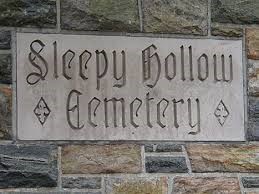
Sleepy Hollow Cemetery map and portion for the Old Dutch Church
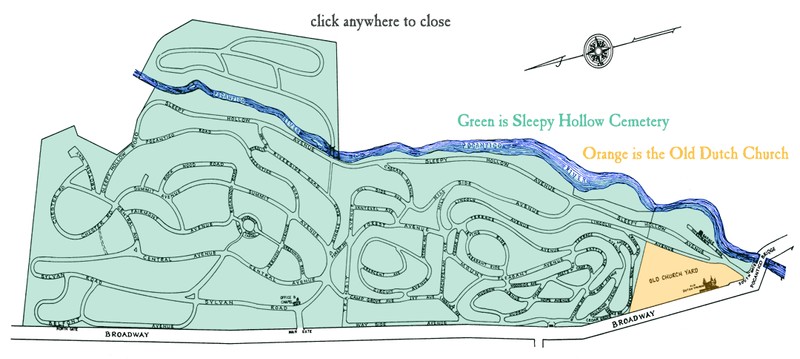
The headless horseman as depicted in the movie Sleepy Hollow.
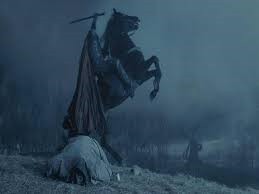
Movie poster for the movie "The Legend of Sleepy Hollow." To the left is Johnny Depp as Ichabod Crane. To the right is, Christina Ricci as Katrina Van Tassel.

Sleepy Hollow Cemetery
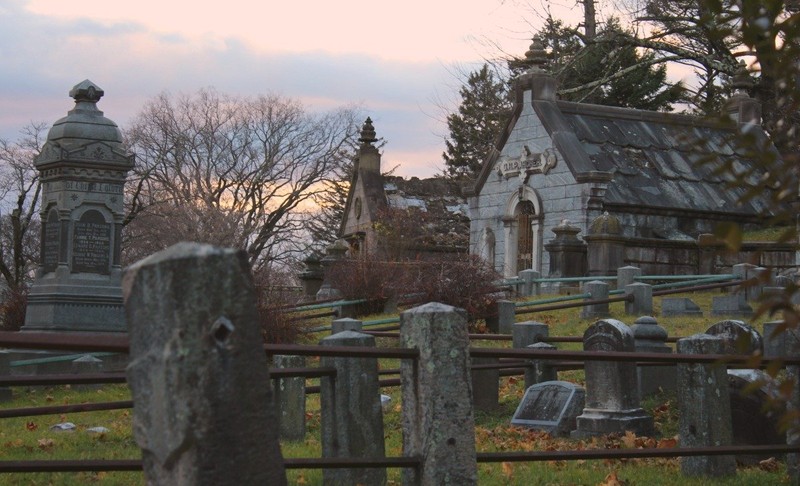
Sleepy Hollow Cemetery
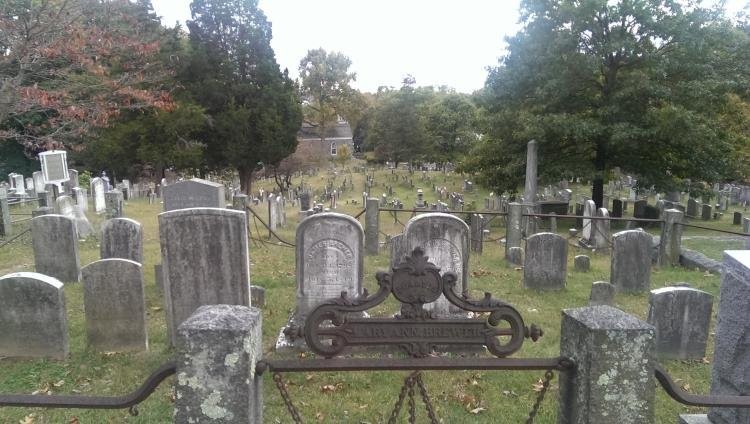
Aerial view of Sleepy Hollow Cemetery
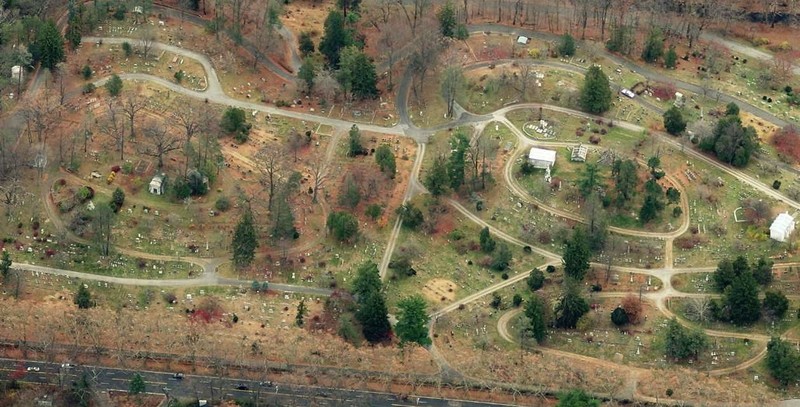
Washington Irving's headstone at Sleepy Hollow Cemetery
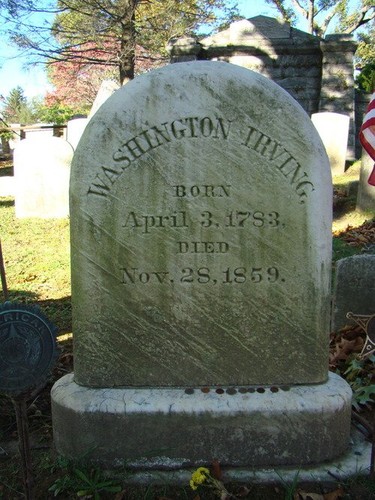
The Headless Horseman Pursuing Ichabod Crane by John Quidor, 1858
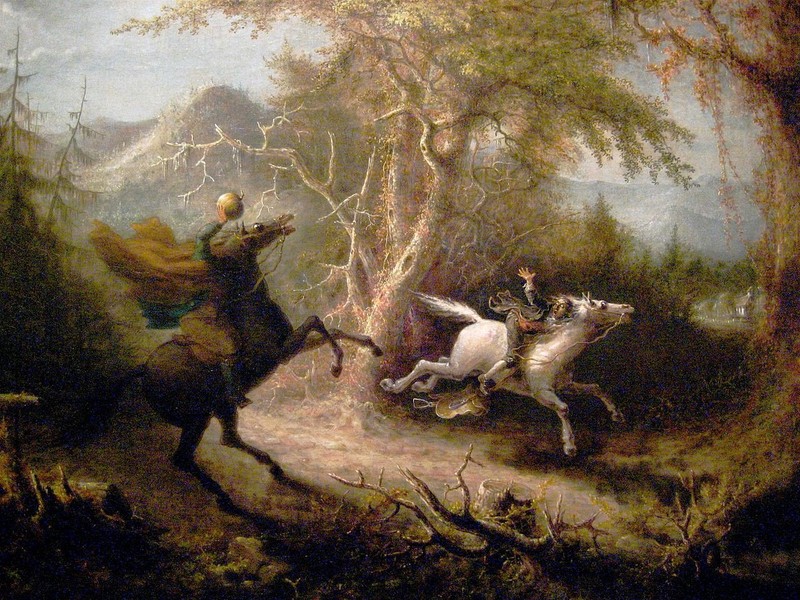
Backstory and Context
Text-to-speech Audio
Sleepy Hollow Cemetery was founded in 1849 after Washington Irving and Captain Jacob Storm noted the necessity of additional burial space due to the growth of the villages of Tarrytown and North Tarrytown. The Old Dutch Burying Ground, which adjoins the south side of Sleepy Hollow Cemetery, no longer had adequate burial space for the growing community. The cemetery was part of the "rural cemetery movement" of the mid-19th century. It sets upon rolling green hills, with the Hudson and Pocantico Rivers nearby.
Sleepy Hollow Cemetery was originally named Tarrytown Cemetery. Washington Irving, who preferred that the new burial place be named Sleepy Hollow Cemetery, noted his opposition to the name in a letter to the editor of Knickerbocker Magazine. The name of Sleepy Hollow Cemetery, Irving noted, "would have been enough of itself to secure the patronage of all desirous of sleeping quietly in their graves." Irving's wish came true on February 9, 1865, when the name of the cemetery was changed to Sleepy Hollow Cemetery.
Sleepy Hollow Cemetery occupies a long rectangular parcel of 85 acres, and contains approximately 45,000 graves as well as a new community mausoleum. Also, it is one of a very few cemeteries in the country that provide a "green" burial option. This is an option that "eliminates any pollution to the environment" by using no toxic chemicals when preparing the body and swapping out typical headstones for trees of remembrance or simple slate stones.
Along with its natural beauty, the cemetery contains several works of well-known 19th and 20th-century American architects and sculptors, as well as structures such as the Washington Irving Memorial Chapel and the William Rockefeller mausoleum. Of course, what may be the greatest draw for visitors of the cemetery of all is the plots of those who are interred there. Famous interments are many, but a few include Washington Irving, Andrew Carnegie, Walter Chrysler, Elizabeth Arden, and George Jones. Also, in 1989, four members from the rock band the Ramones were "buried" there (while still alive) while filming a music video for their tribute to Stephen King’s novel Pet Sematary. Since the video, three of the members have passed away and been buried elsewhere.
Visitors continue to flock to the cemetery for walking tours and tales of the region's both historical and literary history. As a functioning cemetery for over 150 years, Sleepy Hollow Cemetery serves as the final resting place for dozens of influential members of the community, and is listed on both the New York State and the National Registers of Historic Places.
Cite This Entry
Malone, Megan, Clio Admin, and Patrick Raftery on behalf of Westchester County Historical Society. "Sleepy Hollow Cemetery." Clio: Your Guide to History. July 15, 2020. Accessed March 26, 2025. https://theclio.com/entry/19795
Sources
“Famous Interments .” Sleepy Hollow Cemetery, The Sleepy Hollow Cemetery Historic Fund, sleepyhollowcemetery.org/about/famous-interments/.
“Green Burial.” Ballard Durand, Ballard-Durand Funeral & Cremation Services, ballarddurand.com/services/green-burial/.
“History.” Sleepy Hollow Cemetery, The Sleepy Hollow Cemetery Historic Fund, sleepyhollowcemetery.org/historic-fund/.
Raftery, Patrick. The Cemeteries of Westchester County. Volume II. Elmsford, N.Y. Westchester County Historical Society, 2011.

